Anderson-Darling Test
The Anderson–Darling test is a statistical test of whether a given sample of data is drawn from a given probability distribution. In its basic form, the test assumes that there are no parameters to be estimated in the distribution being tested, in which case the test and its set of critical values are distribution-free. However, the test is most often used in contexts where a family of distributions is being tested, in which case the parameters of that family need to be estimated and account must be taken of this in adjusting either the test-statistic or its critical values. When applied to testing whether a normal distribution adequately describes a set of data, it is one of the most powerful statistical tools for detecting most departures from normality.-Wikipedia
API
Application Programming Interface (API), in the context of Java, is a collection of prewritten packages, classes, and interfaces with their respective methods, fields, and constructors. Similar to a user interface, which facilitates interaction between humans and computers, an API serves as a software program interface facilitating interaction.-techopedia
Barcode
Machine-readable data that contains information about an item that a Barcode is attached to. Barcodes have several formats that serve different uses and industries and fall into two categories: Standard Barcodes and 2D Barcodes. In Ignition®, Barcode components are used in both the Vision and Reporting Modules. In Reporting, Barcodes are commonly embedded into an unstructured Table Row or Labels for printing. In the Vision Module, the Barcode component is embedded into a Vision Window.
Bi-Directional
This refers to communication in two directions, either both through the same mechanism such as Tags, or mapping two together like Transaction Groups. Tags support both reading and writing in the Tag itself. Transaction Groups support bi-directional data movement, meaning they can read from an OPC server and write to a database, or they can read from the database and write to the OPC Server.
Bind
In Ignition®, binding a property means tying the value to something else. This is most commonly done to a Tag value or to a value in the database. Bindings can be for display or set to bi-directional to write changes back to the source.
CD-Key
A product key, also known as a software key, is a specific software-based key for a computer program. It certifies that the copy of the program is original.
When the software and the modules are purchased, you are provided with a six-digit CD-Key. If you add a module, your account is updated, and you can re-use your existing CD-Key to activate the new features. You can also deactivate your CD-Key, and reuse it to activate Ignition on a different machine.
MES Components
Components palettes are added to the designer when modules are installed and they can be dropped into window containers. Each component has a Property Editor panel to alter the properties, which change the component’s appearance and behavior.
To make the component do something useful, like display dynamic information or control a device register, you configure property bindings for the component. In order to make the component react to user interaction, you configure the event handlers.
CSV
A Comma Separated Values (CSV) file stores tabular data (numbers and text) in plain text. Each line of the file is a data record. Each record consists of one or more fields, separated by commas. The use of the comma as a field separator is the source of the name for this file format.-Wikipedia
Data Point
A data point is a discrete unit of information. In a general sense, any single fact is a data point. In a statistical or analytical context, a data point is usually derived from a measurement or research and can be represented numerically and/or graphically.
The measurements contained in a data point are formally typed, where here type is used in a way compatible with datatype in computing; so that the type of measurement can specify whether the measurement results in a Boolean value from {yes, no}, an integer or real number, the identity of some category, or some vector or array. The implication of point is often that the data may be plotted in a graphic display, but in many cases, the data are processed numerically before that is done. In the context of statistical graphics, measured values for individuals or summary statistics for different subpopulations are displayed as separate symbols within a display; since such symbols can differ by shape, size, and color, a single data point within a display can convey multiple aspects of the set of measurements for an individual or subpopulation.-Wikipedia
Dataset
A dataset (or data set) is a collection of data, usually presented in tabular form. Each column represents a particular variable. Each row corresponds to a given member of the dataset in question. It lists values for each of the variables, such as height and weight of an object. Each value is known as a cell. The dataset may comprise data for one or more members, corresponding to the number of rows. -Wikipedia
Designer
The Ignition Designer is the piece that allows you to make changes to your projects. Launch it from the Gateway and inside it, you can create windows for your clients, Tags, Transaction Groups, and much more. It is a special Java runtime that runs similar to a client but has all the tools you need to create.
EAN
An EAN-13 barcode (originally European Article Number, but now renamed International Article Number even though the abbreviation EAN has been retained) is a 13 digit (12 data and 1 check) barcoding standard which is a superset of the original 12-digit Universal Product Code (UPC) system. The EAN-13 barcode is defined by the standards organization GS1.
The 13 digits in the EAN-13 barcode are grouped as follows:
The left group: Digits 2-7. The left group also encodes digit 1, through a scheme of odd and even parity.
The right group: Digits 8-13, digit 13 is the check digit. –Wikipedia
ERP
Enterprise resource planning (ERP) is business management software—typically a suite of integrated applications—that a company can use to collect, store, manage and interpret data from many business activities.
Gateway
The Ignition Gateway is a service that runs in the background of your server’s operating system. When running, it is accessed from a web browser. Any computer on the same network can access the Gateway, depending on the Gateway security settings, by using the IP Address or Host Name of the computer where Ignition® is installed.
GS1 Standards
Most companies initially come to GS1 to get a barcode number for their products. However, GS1 Standards provide a much wider framework for supply chain visibility. The current architecture of GS1 standards is as follows:
- Identify: Standards for the identification of items, locations, shipments, assets, etc.. and associated data.
- Capture: Standards for encoding and capturing data in physical data carriers such as barcodes and RFID tags.
- Share: Standards for sharing data between parties. –Wikipedia
GTIN
Global Trade Item Number (GTIN) is an identifier for trade items developed by GS1 (comprising among others of the former EAN International and Uniform Code Council). Such identifiers are used to look up product information in a database often by entering the number through a barcode scanner pointed at an actual product) which may belong to a retailer, manufacturer, collector, researcher, or other entity.
GTINs may be 8, 12, 13, or 14 digits long, and each of these 4 numbering structures is constructed in a similar fashion, combining Company Prefix, Item Reference and a calculated Check Digit (GTIN-14 adds another component – the Indicator Digit, which can be 1-8). GTIN-8s will be encoded in an EAN-8 barcode. GTIN-12s may be shown in UPC-A, ITF-14, or GS1-128 barcodes. GTIN-13s may be encoded in EAN-13, ITF-14 or GS1-128 barcodes, and GTIN-14s may be encoded in ITF-14 or GS1-128 barcodes. The choice of barcode will depend on the application; for example, items to be sold at a retail establishment should be marked with EAN-8, EAN-13, UPC-A or UPC-E barcodes. -Wikipedia.
HMI
Human Machine Interface (HMI) is the user interface in a manufacturing or process control system. It provides a graphical display of industrial control and monitoring systems. An HMI typically resides in an office-based Windows computer that communicates with a specialized computer in the plant such as a programmable logic controller (PLC). HMI is now more widely used for industrial software (such as Ignition®) that monitor and control entire plants and provide historical and statistical data. – PC Magazine Encyclopedia
Ignition®
Ignition by Inductive Automation®, is a web-based software platform that is great for creating HMIs, SCADA, and MES applications. Ignition is affordable and easy to get started with, while flexible and capable of scaling up to the largest projects. Ignition® is installed as server software and is:
- Web-based Ignition® is installed and deployed using web technologies.
- Web-managed Ignition® platform is managed through web pages.
- Web-launched Designer and Clients Ignition® Designer tool and network clients are launched using the web.
For more information on Ignition®, please go to www.inductiveautomation.com
Individual Control Charts
In statistical quality control, the individual/moving-range chart is a type of control chart used to monitor variables data from a business or industrial process for which it is impractical to use rational subgroups. The chart is necessary for the following situations:
- Where automation allows inspection of each unit, so rational subgrouping has less benefit.
- Where production is slow so that waiting for enough samples to make a rational subgroup unacceptably delays monitoring.
- For processes that produce homogeneous batches (e.g., chemical) where repeat measurements vary primarily because of measurement error. -Wikipedia
Inductive University
 Inductive University (IU) is a free online learning platform designed to help you master Ignition by Inductive Automation® SCADA software. With IU, you can watch training videos, test your knowledge, and participate in our new credential program. Click here to learn more about Ignition SCADA software training courses.
Inductive University (IU) is a free online learning platform designed to help you master Ignition by Inductive Automation® SCADA software. With IU, you can watch training videos, test your knowledge, and participate in our new credential program. Click here to learn more about Ignition SCADA software training courses.
Integrator
An Integrator is a person or company who specializes in integrating control systems into manufacturing processes. Integrators are the heart of Sepasoft™ and Inductive Automation, they are the ones called on to create an Ignition® project in a facility or expand existing systems.
I/O
Input/Output (I/O) commonly refers to the data points of a PLC. Specifically, the input and output wires of a PLC are directly connected to a nearby machine. Usually, Ignition® will interact with other memory locations in the PLC, but sometimes users want to see the exact value coming from a machine.
ISA Standard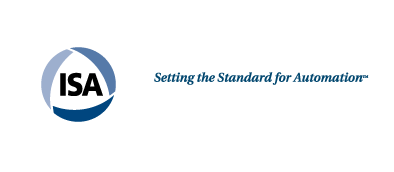
The International Society of Automation (ISA), www.isa.org, is a non-profit professional association that sets the standard for those who apply engineering and technology to improve the management, safety, and cyber security of modern automation and control systems used across industry and critical infrastructure. Founded in 1945, ISA develops widely used global standards; certifies industry professionals; provides education and training; publishes books and technical articles; hosts conferences and exhibits; and provides networking and career development programs for its 40,000 members and 400,000 customers around the world. -About ISA
The ISA-95 standard provides a consistent operational model and terminology that is a foundation for providing a communication flow between ERP, MES, and SCADA systems. It has been developed to be applicable to all industries and for every type of process whether Batch, Continuous, Discrete or Repetitive. The OEE 2.0 and Track and Tracemodules are built around this standard with the goal of reducing the risk, cost, and errors associated with implementing these interfaces.
Click here for Sepasoft’s ISA-95 Statement of Compliance
Java
Java is a software language and platform developed by Sun Microsystems. Ignition® is written using the Java language. In order to run a program written in Java, you must have the JRE (Java Runtime Environment) installed on your computer. There are versions of the JRE for pretty much every conceivable operating system, which makes programs written in Java very portable. Because of this, Ignition® can be installed on Windows, OSX, and Linux operating systems.
Scripting in Ignition® does not use Java, instead, it uses the Jython language. This means you script with Python, but have access to some parts of Java.
JSON
Javascript Object Notation (JSON) is a lightweight data-interchange format. It’s easy for humans to read and write, and for machines to parse and generate. It is based on a subset of the JavaScript Programming Language. –JSON
JVM
The Java Virtual Machine (JVM) is an abstraction layer between a Java application and the underlying platform. As the name implies, the JVM acts as a “virtual” machine or processor. To the bytecodes comprising the program, they are communicating with a physical machine; however, they are actually interacting with the JVM. -techopedia
When we talk about “the JVM” in Ignition®, we are referring to the underlying layer of code that is running everything.
Jython
Jython is the scripting language Ignition uses in the Designer. Jython (Java–Python) can be used in an event-based system like Ignition® and uses Python functions and syntax, but allows users access to Java methods.
You can find out more about Jython here. You can find out more about the usable functions in Python here.
KPI
A Key Performance Indicator (KPI) is a value or a small set of values that let you know how well your system is doing. The will be different for every type of process or facility but generally show product creation speed, throughput, downtime, or anything else that may give an overview of the process.
LAN
A local area network (LAN) is a computer network that interconnects computers within a limited area. It shares a common communication line or wireless link to a server. -Wikipedia
LCL
A lower control limit (LCL) is a bottom limit in quality control for data points below the control (average) line in a control chart. Opposite of upper control limit. The horizontal line is drawn on a control chart at a specified distance below the central line; points plotted below the lower control limit indicate that the process may be out of control.
LEAN
Lean manufacturing or lean production, often simply “lean”, is a systematic method for the elimination of waste within a manufacturing system. Lean also takes into account waste created through overburden and waste created through unevenness in workloads. -Wikipedia
LEAN Six Sigma
LEAN Six Sigma is a methodology that relies on a collaborative team effort to improve performance by systematically removing waste; combining lean manufacturing/lean enterprise and Six Sigma to eliminate the eight kinds of waste.-Wikipedia
MES
A manufacturing execution system (MES) is a control system for managing and monitoring work-in-process on a factory floor.
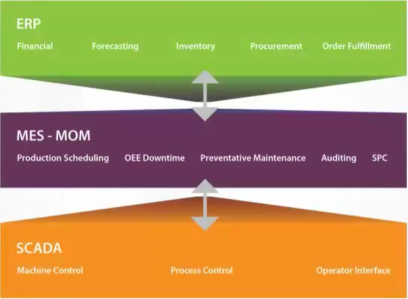
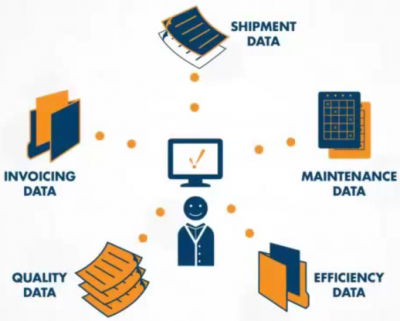
MES Modules
The Sepasoft™ MES Modules are software tools designed to help a company manage its manufacturing processes. The Sepasoft™ MES Module suite operates across multiple function areas, including management of product definitions across the product lifecycle, resource scheduling, order execution and dispatch, production analysis and downtime management for Overall Equipment Effectiveness (OEE), Product Quality, and Track & Trace.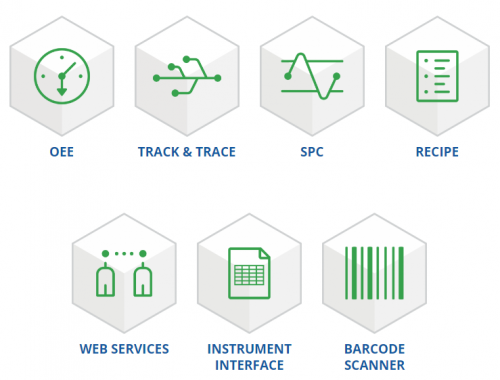
Other benefits include:
- Real-Time Efficiency Tracking and Monitoring Controls
- Downtime Data Collection
- At-a-Glance Executive Dashboards
- Easy ERP Integration
- Mobile MES Access
- Production Scheduling
- Quality and Maintenance Management
- Batch Processing
- Fast, Customizable Implementation
- Automatic Data Collection
MES Platform
The Sepasoft™ MES Platform consists of modular-based software available for download and use with Ignition® by Inductive Automation.
Modules
A compartmentalized addition to an Ignition server that when installed will introduce extra features. Modules can be added or removed from the Gateway Web page; additional modules can be downloaded from the Inductive Automation website.
MOM
Manufacturing operation management (MOM) is an approach for overseeing all aspects of the manufacturing process with a particular focus to increase efficiency.
MQTT
Message queuing telemetry transport (MQTT) is an ISO standard publish-subscribe-based messaging protocol. It works on top of the TCP/IP protocol. It is designed for connections with remote locations where “small code footprint” is required or the network bandwidth is limited.
MTBF
Mean time between failures (MTBF) is the predicted elapsed time between inherent failures of a system during operation. MTBF can be calculated as the arithmetic mean (average) time between failures of a system. The term is used in both plant and equipment maintenance contexts.
MySQL
MySQL is a relational database. Ignition connects easily to it and can use it to store or retrieve data.
Network
A network is a web of connections, usually Ethernet based, between many computers and machines in a facility. Can mean a local group such as a local area network (LAN) or a larger group connected to the internet such as a wide area network (WAN).
Normal Distribution
In probability theory, the normal (or Gaussian) distribution is a very common continuous probability distribution. Normal distributions are used in the natural and social sciences to represent real-valued random variables whose distributions are not known. The normal distribution is remarkably useful because of the central limit theorem. In its most general form, under some conditions (which include finite variance), it states that averages of random variables independently drawn from independent distributions converge in distribution to the normal, that is, become normally distributed when the number of random variables is sufficiently large. Physical quantities that are expected to be the sum of many independent processes (such as measurement errors) often have distributions that are nearly normal. Moreover, many results and methods (such as propagation of uncertainty and least squares parameter fitting) can be derived analytically in explicit form when the relevant variables are normally distributed. The normal distribution is sometimes informally called the bell curve. However, many other distributions are bell-shaped (such as Cauchy’s, Student’s, and logistic). The terms Gaussian function and Gaussian bell curve are also ambiguous because they sometimes refer to multiples of the normal distribution that cannot be directly interpreted in terms of probabilities. The probability density of the normal distribution is:
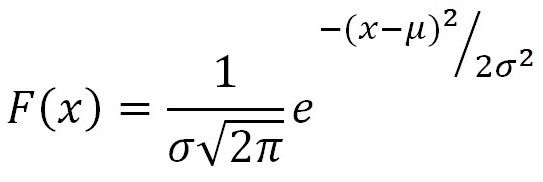
Here, μ is the mean or expectation of the distribution (and also its median and mode). The parameter σ is its standard deviation with its variance then σ2. A random variable with a Gaussian distribution is said to be normally distributed and is called a normal deviate. If μ = 0 and σ = 1, the distribution is called the standard normal distribution or the unit normal distribution denoted by N(0,1) and a random variable with that distribution is a standard normal deviate. -Wikipedia.
OAuth 2.0 Authorization
OAuth 2.0 Authorization is an open protocol to allow secure authorization in a simple and standard method from web, mobile and desktop applications. Use OAuth to let application developers securely get access to your users’ data without sharing their passwords. (ouauth.net OAuth Community Site 10/31/2022)
MES Objects
Objects are used extensively throughout the MES modules. Some are for the ISA-95 object model, while others are part of our platform. Collectively, we refer to all these objects as MES Objects. An object can represent material, equipment, an operation, production information, etc. Some properties, events, and functions are common across all objects, while other objects add their own additional properties, events, and functions. Today, the MES Objects are used by the Track & Trace and OEE 2.0 modules. In future releases, all other MES modules will also be based on the MES Objects.
OEE
Overall equipment effectiveness (OEE) measures the percentage of planned production time that is truly productive.
OEE = Availability x Performance x Quality
OIT
Operator Interface Terminal (OIT) is a low-level graphical interface to a specified computer on the plant floor such as a programmable automation controller (PAC), a programmable logic controller (PLC) or distributed control system (DCS).
OPC
An Open Process Connectivity (OPC) is the name of a technology standard used to write to programmable logic controllers (PLC)s. OPC allows information exchange between gauges, databases, PLCs, and more.
OPC Server
An Object Linking and Embedding for Process Control (OPC) Server is a software application that acts as an API (Application Programming Interface) or protocol converter. An OPC Server can connect to a device such as a Programmable Logic Controller (PLC), Distributed Control System (DCS), and Remote Terminal Unit (RTU) or a data source such as a database or Human Machine Interface (HMI) to translate the data into a standard OPC format.
OPC Tag
Often referred to as just ‘Tags’, OPC Tags are Ignition tags that specify an OPC server and address which drives their values. The OPC address will be subscribed at the rate of the tag’s scan class during configuration, and values written to these tags will be pushed to the PLCs.
OPC-UA
An Object Linking and Embedding for Process Control Unified Architecture (OPC-UA) is a is a communication protocol for interoperability developed by the OPC Foundation. The Foundation’s goal for this project was to provide a path forward from the original OPC communications model (namely COM/DCOM) to a cross-platform service-oriented architecture (SOA) for process control while enhancing security and providing an information model.
Using the OPC-UA module, Ignition acts as an OPC-UA server, serving data collected by its built-in drivers to other Ignition modules, as well as third-party OPC-UA clients. -Wikipedia
Oracle
Oracle is a relational database. Ignition connects to it easily and it can be used to store or retrieve data.
OS
Operation System (OS) is a layer which the Ignition platform rests upon. The operating systems include Windows, Apple (MacOS), and Linux/Ubuntu.
OS Layer > Platform Layer > Core Module Layer > Third-Party Module Layer > User Created Application Layer
You can view an example of this layering here.
Parameter
A parameter is any value that is used in some larger system. In Ignition, we are usually referring to a parameter passed into a window, report, or component. The behavior of that object will then be altered based on the value of the parameter. For example, a parameter might be a machine number or an area name.
PLC
A Programmable Logic Controller (PLC) is a programmable microprocessor-based device that is used in manufacturing to control assembly lines and machinery on the shop floor as well as many other types of mechanical, electrical, and electronic equipment in a plant. A PLC is designed for real-time use in rugged, industrial environments. Connected to sensors and actuators, PLCs are categorized by the number and type of Input/Output (I/O) ports they provide and by their I/O scan rate.
PLM
Product Lifecycle Management (PLM) is an information management system that can integrate data, processes, business systems, and ultimately, people in an extended enterprise.
PPM
Parts per million (PPM) is a measurement used today by many customers to measure quality performance. One PPM means one (defect or event) in a million or 1/1,000,000.
Protocol
A protocol is a set of rules governing the exchange or transmission of data between devices.
Python
Python is the scripting language used in Ignition for more open-ended requirements. If a binding is not exactly what you want, or you want to change some of the underlying functionality of Ignition, you can write a Python script to accomplish whatever you need. Ignition uses Python as the language and Jython as the implementation of the language. For beginners, the distinction between Python and Jython does not matter.
You can learn more about scripting here, or in the official Python documentation.
Python Dictionary
A Python dictionary is a key-value store container. A dictionary allows the developer to assign an index or “key” for every element that is placed into the construct. Therefore, each entry into a dictionary requires two values, the key, and the element.
QSP
Sepasoft’s Quick Start Program (QSP) helps our end users identify and mitigate common risk factors associated with MES implementation.
Regex
In theoretical computer science and formal language theory, a regular expression (sometimes called a rational expression or regex) is a sequence of characters that define a search pattern, mainly for use in pattern matching with strings, or string matching, i.e. “find and replace”–like operations and came into common use with the Unix text processing utilities ed, an editor, and grep, a filter. -Wikipedia.
REST
In computing, representational state transfer (REST) is the software architectural style of the World Wide Web. REST gives a coordinated set of constraints to the design of components in a distributed hypermedia system that can lead to a higher-performing and more maintainable architecture.
The architectural properties affected by the constraints of the REST architectural style are:
- Performance: component interactions can be the dominant factor in user-perceived performance and network efficiency.
- Scalability: support large numbers of components and interactions among components. -Wikipedia.
RS-232
In telecommunications, RS-232 is a standard for serial communication transmission of data. It formally defines the signals connecting between a DTE (data terminal equipment) such as a computer terminal, and a DCE (data circuit-terminating equipment), such as a modem. The RS-232 standard is commonly used in computer serial ports. The standard defines the electrical characteristics and timing of signals, the meaning of signals, and the physical size and pinout of connectors. -Wikipedia.
SAP
Systems, Applications, & Products (SAP) implementation is based on best practices and case studies from various literature sources and presents a collection of processes and products that make up a complete implementation method to allow any organization to plan and execute the implementation of SAP software. –Wikipedia
SCADA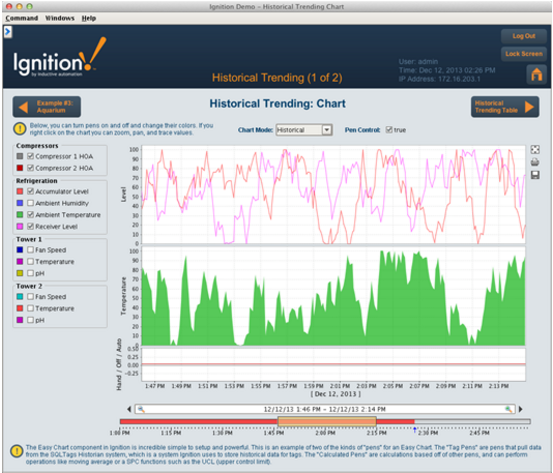
Supervisory Control And Data Acquisition (SCADA) is a process control system that is used in a countless number of applications, including manufacturing, communications, distribution (water, gas, power) and heating, cooling and security in buildings. A SCADA system collects data from sensors in local and remote locations and sends them to central computers to control local machinery.
SCADA systems range from simple configurations to large and complex projects. Most SCADA systems use human-machine interface (HMI) software that allows users to interact with and control the machines and devices that the HMI is connected to such as valves, pumps, motors, and much more.
SCADA software receives its information from RTUs (Remote Terminal Units) or PLCs (Programmable Logic Controllers) which can receive their information from sensors or manually inputted values. From here, the data can be used to effectively monitor, collect and analyze data, which can potentially reduce waste and improve efficiency resulting in savings of both time and money.
Ignition is a SCADA software solution.
SDLC
Software Development Life Cycle (SDLC) is a term referring to the Sepasoft MES module release pattern, which is noted below:
Beta > Release Candidate > Full Release > Service Pack
Beta: Version that it has not yet passed our Test/QA process and is ready for a production environment. We provide this version as an opportunity for end users to use in a development environment and, in rare cases, to fix a critical bug in production.
Release Candidate: Version has passed through our Test/QA process and is considered to be stable enough to be used in development and production.
Full Release: Version follows the Release Candidate version and may include any minor fixes reported or found.
Service Pack: Consists of minor updates to the Full Release version.
The software development life cycle (SDLC) is a framework defining tasks performed at each step in the software development process. SDLC is a structure followed by a development team within the software organization. It consists of a detailed plan describing how to develop, maintain and replace specific software. The life cycle defines a methodology for improving the quality of software and the overall development process.
The software development life cycle is also known as the software development process.–techopedia
SFC
A Sequential Function Chart (SFC) is a series of scripts that are defined in a single location and then called in sequential order. Additional elements in the chart can determine where the flow of the chart will lead. Charts can loop around indefinitely, or execute a set number of times before ending. Sequential Function Charts are based on a graphical programming language in the IEC 61131-1 standard. This language may be familiar to PLC programmers, as it is one of the languages commonly available for programming PLCs.
SFCs are used to execute logic in ways that are more convenient to structure than with Python scripts or PLC programming alone. Because of their inherently visual depiction, they help to illuminate logic to users and facilitate intuitive development and refinement. Charts can be monitored as they run visually, making troubleshooting easier than with scripting alone. -Ignition User Manual
Six Sigma
Six Sigma is a set of techniques and tools for process improvement. It seeks to improve the quality of the output of a process by identifying and removing the causes of defects and minimizing variability in manufacturing and business processes. It uses a set of quality management methods, mainly empirical, statistical methods, and creates a special infrastructure of people within the organization, who are experts in these methods. Each Six Sigma project carried out within an organization follows a defined sequence of steps and has specific value targets, for example: reduce process cycle time, reduce pollution, reduce costs, increase customer satisfaction, and increase profits. -Wikipedia
SOA
A service-oriented architecture (SOA) is an architectural pattern in computer software design in which application components provide services to other components via a communications protocol, typically over a network. The principles of service-orientation are independent of any vendor, product or technology. A service is a self-contained unit of functionality, such as retrieving an online bank statement. By that definition, a service is a discretely invokable operation. -Wikipedia
SPC
Statistical Process Control (SPC) is a method of quality control which uses statistical methods. SPC is applied in order to monitor and control a process. -Wikipedia
SQL
Structured Query Language (SQL) is a standard computer language for relational database management and data manipulation. SQL is used to query, insert, update and modify data. Most relational databases support SQL, which is an added benefit for database administrators (DBAs), as they are often required to support databases across several different platforms.
First developed in the early 1970s at IBM by Raymond Boyce and Donald Chamberlin, SQL was commercially released by Relational Software Inc. (now known as Oracle Corporation) in 1979. The current standard SQL version is voluntary, vendor-compliant and monitored by the American National Standards Institute (ANSI). Most major vendors also have proprietary versions that are incorporated and built on ANSI SQL, e.g., SQL*Plus (Oracle), and Transact-SQL (T-SQL) (Microsoft). -Techopedia
SUDS
SUDS is a lightweight version of SOAP, hence the name SUDS. SOAP stands for Simple Object Access Protocol, and is commonly used for Internet communication. Both SUDS and SOAP are part of the Sepasoft® MES Web Services solutions.
TEEP
Total Effective Equipment Performance (TEEP) is a performance metric that shows the total performance of equipment based on the amount of time the equipment was present. Typically the equipment is onsite and thus TEEP is metric that shows how well equipment is utilized.
TEEP = Planned Equipment Downtime% x Availability% x Performance% x Quality%
UCL
The upper control limit (UCL) is a value that indicates the highest level of quality acceptable for a product or service. The UCL is used in conjunction with the lower control limit to create the range of variability for quality specifications, enabling those within the organization to provide an optimal level of excellence by adhering to the established guidelines.
UPC
The universal product code (UPC) is a barcode symbology (i.e., a specific type of barcode) that is used for scanning of trade items at the point of sale, per GS1 specifications. The most common form, UPC-A, consists of 12 numerical digits, which are uniquely assigned to each trade item. -Wikipedia.
VPN
A virtual private network (VPN) extends a private network across a public network, such as the Internet. It enables users to send and receive data across shared or public networks as if their computing devices were directly connected to the private network, and thus are benefiting from the functionality, security, and management policies of the private network. -Wikipedia
WSDL
The Web Services Description Language (WSDL) is an XML-based interface definition language that is used for describing the functionality offered by a web service. The acronym is also used for any specific WSDL description of a web service (also referred to as a WSDL file), which provides a machine-readable description of how the service can be called, what parameters it expects, and what data structures it returns. Therefore, its purpose is roughly similar to that of a type signature in a programming language. -Wikipedia
XBarS Chart
In statistical quality control, the XBarS Chart is a type of control chart used to monitor variables data when samples are collected at regular intervals from a business or industrial process. An XbarS chart plots the process mean (Xbar chart) and process standard deviation (S chart) over time for variables data in subgroups. -Wikipedia.

 Inductive University (IU) is a free online learning platform designed to help you master Ignition by Inductive Automation
Inductive University (IU) is a free online learning platform designed to help you master Ignition by Inductive Automation




